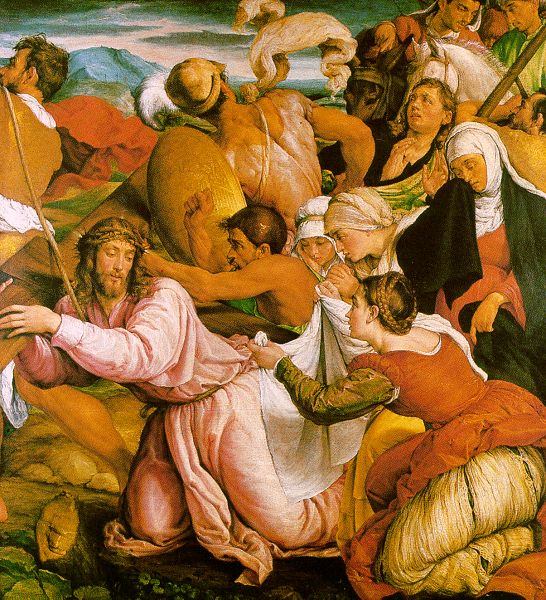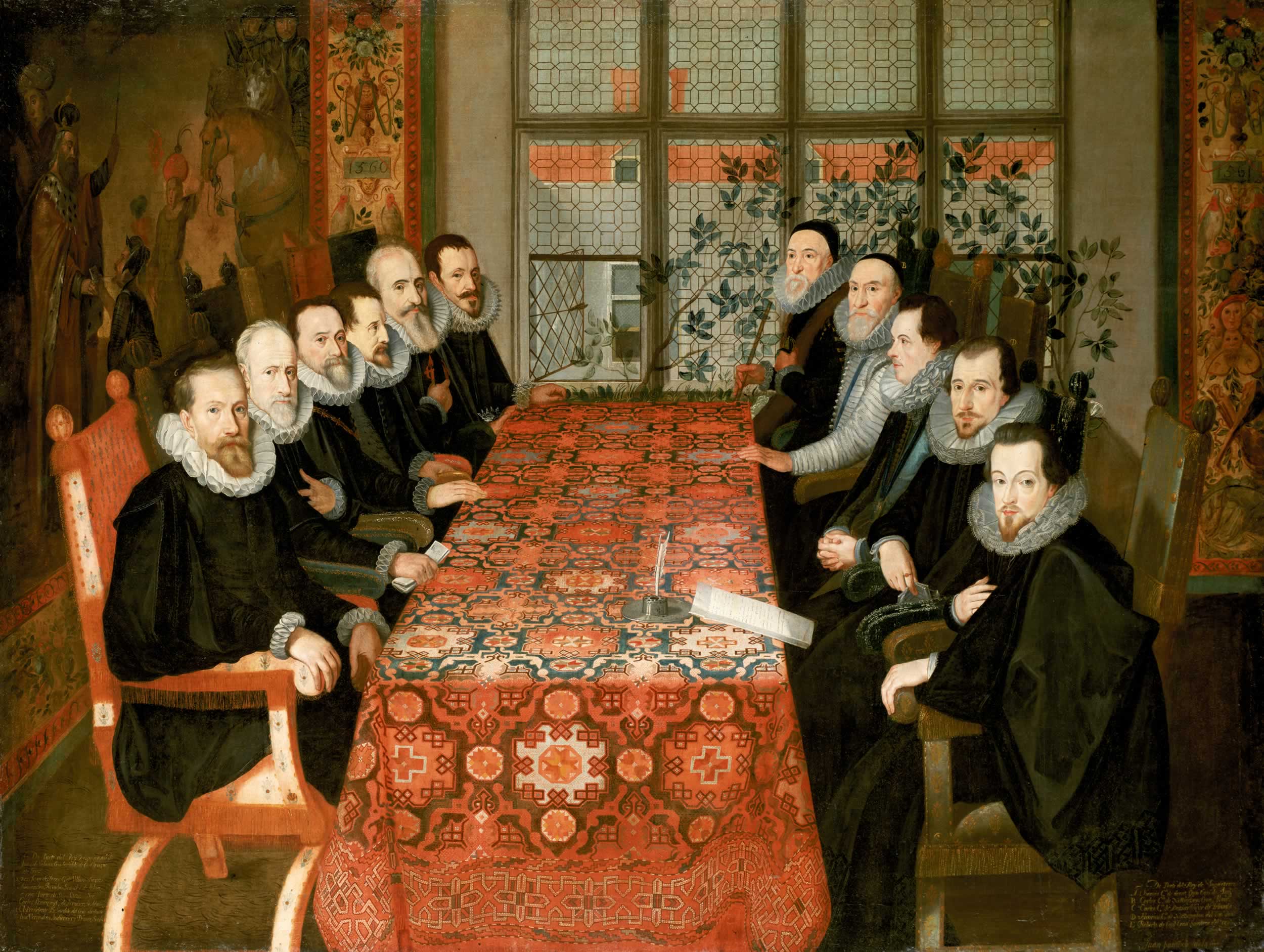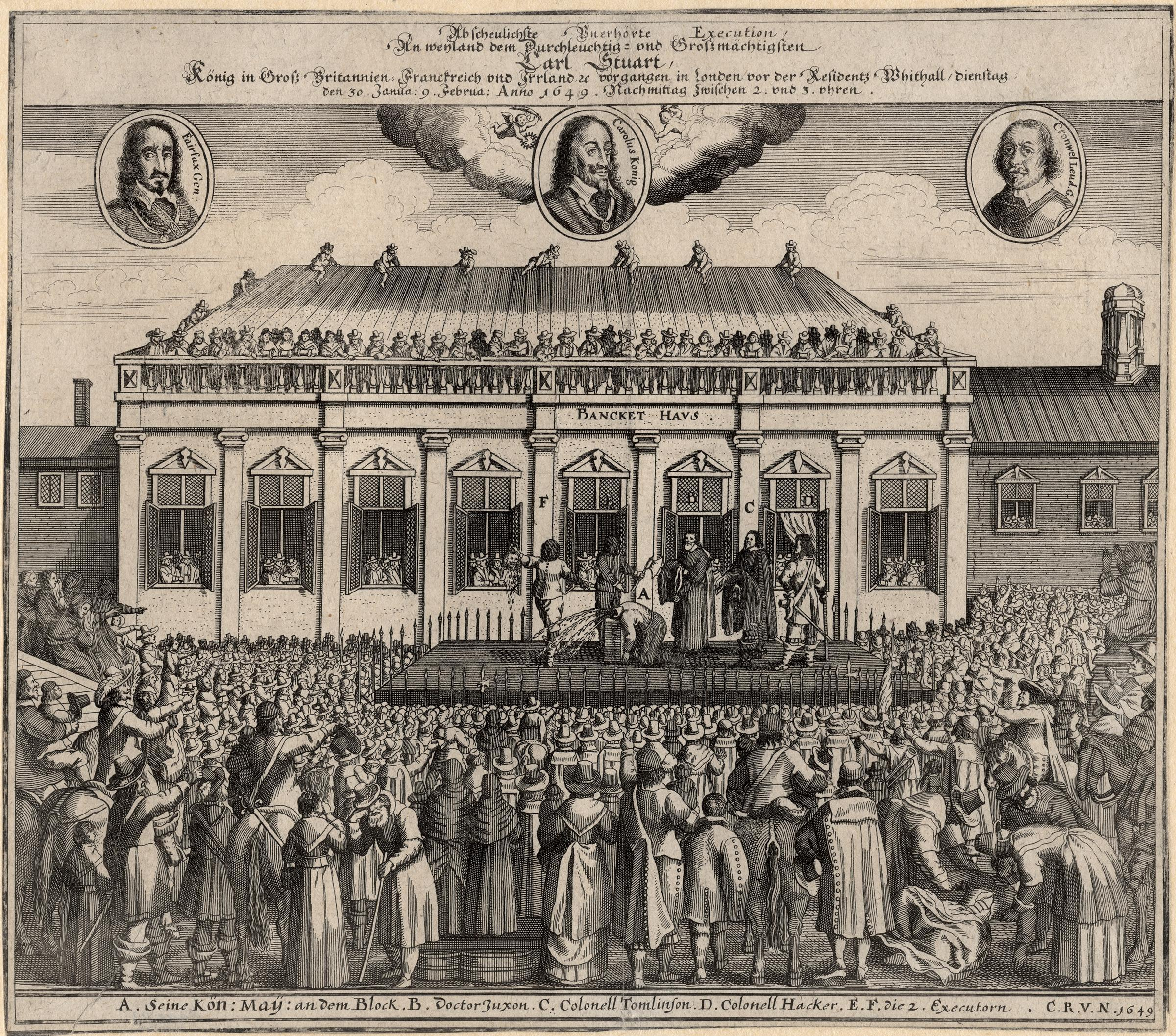|
Royal Collection Trust
The Royal Collection of the British royal family is the largest private art collection in the world. Spread among 13 occupied and historic royal residences in the United Kingdom, the collection is owned by King Charles III and overseen by the Royal Collection Trust. The British monarch owns some of the collection in right of the Crown and some as a private individual. It is made up of more than one million objects, including 7,000 paintings, more than 150,000 works on paper, this including 30,000 watercolours and drawings, and about 450,000 photographs, as well as around 700,000 works of art, including tapestries, furniture, ceramics, textiles, carriages, weapons, armour, jewellery, clocks, musical instruments, tableware, plants, manuscripts, books, and sculptures. Some of the buildings which house the collection, such as Hampton Court Palace, are open to the public and not lived in by the royal family, whilst others, such as Windsor Castle and Kensington Palace, are both ... [...More Info...] [...Related Items...] OR: [Wikipedia] [Google] [Baidu] |
Queen's Gallery, Buckingham Palace (2)
The King's Gallery, previously known as the Queen's Gallery, is a public art gallery at Buckingham Palace, the official residence of the British monarchy, British monarch, in London. First opened to the public in the reign of Elizabeth II in 1962, it exhibits works of art from the Royal Collection on a rotating basis. Enlarged in the early 21st century, the gallery has its own separate public access entrance built in a New Classical architecture, "new" classical style and typically displays about 450 works, mainly paintings and drawings. Building history The gallery forms the most protruding south wing of the Palace. It is on the site of the palace chapel bombed during the Second World War. The purpose-built gallery opened in 1962; in the next 37 years it received five million visitors, until its closure in 1999 for refurbishment and expansion. The work was commissioned from architect John Simpson (architect), John Simpson. On 21 May 2002, the gallery was reopened by Elizabeth ... [...More Info...] [...Related Items...] OR: [Wikipedia] [Google] [Baidu] |
Tower Of London
The Tower of London, officially His Majesty's Royal Palace and Fortress of the Tower of London, is a historic citadel and castle on the north bank of the River Thames in central London, England. It lies within the London Borough of Tower Hamlets, which is separated from the eastern edge of the square mile of the City of London by the open space known as Tower Hill. It was founded toward the end of 1066 as part of the Norman Conquest. The White Tower (Tower of London), White Tower, which gives the entire castle its name, was built by William the Conqueror in 1078 and was initially a resented symbol of oppression, inflicted upon London by the new Normans, Norman ruling class. The castle was also used as a prison from 1100 (Ranulf Flambard, Bishop of Durham) until 1952 (the Kray twins), although that was not its primary purpose. A grand palace early in its history, it served as a royal residence. As a whole, the Tower is a complex of several buildings set within two concentric ring ... [...More Info...] [...Related Items...] OR: [Wikipedia] [Google] [Baidu] |
Johannes Vermeer - Lady At The Virginal With A Gentleman, 'The Music Lesson' - Google Art Project
Johannes is a Medieval Latin form of the personal name that usually appears as "John" in English language contexts. It is a variant of the Greek and Classical Latin variants (Ιωάννης, '' Ioannes''), itself derived from the Hebrew name '' Yehochanan'', meaning "YHWH is gracious". The name became popular in Northern Europe, especially in Germany because of Christianity. Common German variants for Johannes are ''Johann'', ''Hannes'', '' Hans'' (diminutized to ''Hänschen'' or ''Hänsel'', as known from "''Hansel and Gretel''", a fairy tale by the Grimm brothers), '' Jens'' (from Danish) and '' Jan'' (from Dutch, and found in many countries). In the Netherlands, Johannes was without interruption the most common masculine birth name until 1989. The English equivalent for Johannes is John. In other languages *Joan, Jan, Gjon, Gjin and Gjovalin in Albanian *'' Yoe'' or '' Yohe'', uncommon American form''Dictionary of American Family Names'', Oxford University Press, 2013. *Ya� ... [...More Info...] [...Related Items...] OR: [Wikipedia] [Google] [Baidu] |
Dutch Gift
The Dutch Gift of 1660 was a collection of 24 mostly Italian Renaissance paintings, four by Dutch Masters, and twelve classical sculptures. The gift was presented to newly-restored King Charles II of England on 16 November by envoys of the States of Holland. Most of the paintings and all the Roman sculptures were from the Reynst collection, the most important seventeenth-century Dutch collection of paintings of the Italian sixteenth century, formed in Venice by Jan Reynst (1601–1646) and extended by his brother, Gerrit Reynst (1599–1658). The gift reflected the taste Charles shared with his father, Charles I, whose large collection, one of the most magnificent in Europe, had mostly been sold abroad after he was executed in 1649. Charles II was not as keen a collector as his father, but appreciated art and was later able to recover a good number of the items from the pre-war collection that remained in England, as well as purchasing many further paintings, and many si ... [...More Info...] [...Related Items...] OR: [Wikipedia] [Google] [Baidu] |
Dutch Republic
The United Provinces of the Netherlands, commonly referred to in historiography as the Dutch Republic, was a confederation that existed from 1579 until the Batavian Revolution in 1795. It was a predecessor state of the present-day Netherlands and the first independent Dutch people, Dutch nation state. The republic was established after seven Dutch provinces in the Spanish Netherlands Dutch Revolt, revolted against Spanish Empire, Spanish rule, forming a mutual alliance against Spain in 1579 (the Union of Utrecht) and declaring their independence in 1581 (the Act of Abjuration). The seven provinces it comprised were Lordship of Groningen, Groningen (present-day Groningen (province), Groningen), Lordship of Frisia, Frisia (present-day Friesland), Lordship of Overijssel, Overijssel (present-day Overijssel), Duchy of Guelders, Guelders (present-day Gelderland), lordship of Utrecht, Utrecht (present-day Utrecht (province), Utrecht), county of Holland, Holland (present-day North Holla ... [...More Info...] [...Related Items...] OR: [Wikipedia] [Google] [Baidu] |
English Restoration
The Stuart Restoration was the reinstatement in May 1660 of the Stuart monarchy in Kingdom of England, England, Kingdom of Scotland, Scotland, and Kingdom of Ireland, Ireland. It replaced the Commonwealth of England, established in January 1649 after the execution of Charles I, with his son Charles II of England, Charles II. The Commonwealth of England had been governed by Lord Protector Oliver Cromwell and then his son Richard Cromwell. The term is also used to describe the reign of Charles II (1660–1685), and sometimes that of his younger brother King James II, James II (1685–1688). The Protectorate After Richard Cromwell, Lord Protector from 1658 to 1659, ceded power to the Rump Parliament, Charles Fleetwood and John Lambert (general), John Lambert then dominated government for a year. On 20 October 1659, George Monck, the governor of Scotland under the Cromwells, marched south with his army from Scotland to oppose Fleetwood and Lambert. Lambert's a ... [...More Info...] [...Related Items...] OR: [Wikipedia] [Google] [Baidu] |
Charles II Of England
Charles II (29 May 1630 – 6 February 1685) was King of Scotland from 1649 until 1651 and King of England, Scotland, and King of Ireland, Ireland from the 1660 Restoration of the monarchy until his death in 1685. Charles II was the eldest surviving child of Charles I of England, Scotland and Ireland and Henrietta Maria of France. After Charles I's execution at Palace of Whitehall, Whitehall on 30 January 1649, at the climax of the English Civil War, the Parliament of Scotland proclaimed Charles II king on 5 February 1649. However, England entered the period known as the English Interregnum or the English Commonwealth with a republican government eventually led by Oliver Cromwell. Cromwell defeated Charles II at the Battle of Worcester on 3 September 1651, and Charles Escape of Charles II, fled to mainland Europe. Cromwell became Lord Protector of England, Scotland and Ireland. Charles spent the next nine years in exile in France, the Dutch Republic and the Spanish Netherlands. ... [...More Info...] [...Related Items...] OR: [Wikipedia] [Google] [Baidu] |
English Republic
The Commonwealth of England was the political structure during the period from 1649 to 1660 when England and Wales, later along with Ireland and Scotland, were governed as a republic after the end of the Second English Civil War and the trial and execution of Charles I. The republic's existence was declared through "An Act declaring England to be a Commonwealth", adopted by the Rump Parliament on 19 May 1649. Power in the early Commonwealth was vested primarily in the Parliament and a Council of State. During the period, fighting continued, particularly in Ireland and Scotland, between the parliamentary forces and those opposed to them, in the Cromwellian conquest of Ireland and the Anglo-Scottish war of 1650–1652. In 1653, after dissolution of the Rump Parliament, the Army Council adopted the Instrument of Government, by which Oliver Cromwell was made Lord Protector of a united "Commonwealth of England, Scotland and Ireland", inaugurating the period now usually kn ... [...More Info...] [...Related Items...] OR: [Wikipedia] [Google] [Baidu] |
Somerset House
Somerset House is a large neoclassical architecture, neoclassical building complex situated on the south side of the Strand, London, Strand in central London, overlooking the River Thames, just east of Waterloo Bridge. The Georgian era quadrangle is built on the site of a Tudor period, Tudor palace ("Old Somerset House") originally belonging to the Edward Seymour, 1st Duke of Somerset, Duke of Somerset. The present Somerset House was designed by William Chambers (architect), Sir William Chambers, begun in 1776, and was further extended with Victorian era outer wings to the east and west in 1831 and 1856 respectively. The site of Somerset House stood directly on the River Thames until the Victoria Embankment was built in the late 1860s. The great Georgian era structure was built to be a grand public building housing various government and public-benefit society offices. Its present tenants are a mixture of various organisations, generally centred around the arts and education. ... [...More Info...] [...Related Items...] OR: [Wikipedia] [Google] [Baidu] |
Execution Of Charles I
Charles_I_of_England, Charles I, King of Kingdom of England, England, Kingdom of Scotland, Scotland, and Kingdom of Ireland, Ireland, was executed on Tuesday, 30 January 1649 outside the Banqueting House on Whitehall, London. The execution was the culmination of political and military conflicts between the cavaliers, royalists and the roundheads, parliamentarians in England during the English Civil War, leading to Charles's capture and Trial of Charles I, trial. On Saturday 27 January 1649, the parliamentarian High Court of Justice for the trial of King Charles I, High Court of Justice had declared Charles guilty of attempting to "uphold in himself an unlimited and tyrannical power to rule according to his will, and to overthrow the rights and liberties of the people" and sentenced him to death by beheading. Charles spent his last few days in St James's Palace, accompanied by his most loyal subjects and visited by his family. On 30 January, he was taken to a large black gallows, ... [...More Info...] [...Related Items...] OR: [Wikipedia] [Google] [Baidu] |
Duchy Of Mantua
The Duchy of Mantua (; ) was a duchy in Lombardy, northern Italy. Its first duke was Federico II Gonzaga, member of the House of Gonzaga that ruled Mantua since 1328. In 1531, the duchy also acquired the March of Montferrat, thanks to the marriage between Gonzaga and Margaret Paleologa, Marchioness of Montferrat. The duchy's historic power and influence under the Gonzaga family made it one of the main artistic, cultural, and especially musical hubs of Northern Italy and the country as a whole. Mantua also had one of the most splendid courts of Italy and Europe in the fifteenth, sixteenth, and early seventeenth centuries. In 1708, after the death of Ferdinando Carlo Gonzaga, the last heir of the Gonzaga family, the duchy was partitioned. The domains were divided between the House of Savoy, that obtained the remaining half of Montferrat, and the House of Habsburg, that obtained the city of Mantua itself. History Background After the fall of the Western Roman Empire, Man ... [...More Info...] [...Related Items...] OR: [Wikipedia] [Google] [Baidu] |
Gonzaga Collection
The Gonzaga Collection or Celeste Gallery (''la Celeste Galeria'') was the large collection of artworks commissioned and acquired by the House of Gonzaga in Mantua, Italy, exhibited for a time in the Palazzo Ducale, the Palazzo Te, the Palazzo San Sebastiano and other buildings in Mantua and elsewhere. The Gonzagas were inspired by the wunderkammer style of collecting practised by the princes of Bavaria, with Isabella d'Este in particular creating a noted private 'studiolo'. They set an example for other European courts, particularly in their patronage of contemporary artists, whilst their collecting increased the international profile of Mantua, a relatively small state. It reached its peak under Vincenzo I Gonzaga and his son Ferdinando, before the family's decline led to major losses from the collection, such as the long negotiations from 1625 onwards with Charles I of Great Britain, mediated by two members of the Whitehall Group – the Flemish art dealer Daniel Nys and ... [...More Info...] [...Related Items...] OR: [Wikipedia] [Google] [Baidu] |









